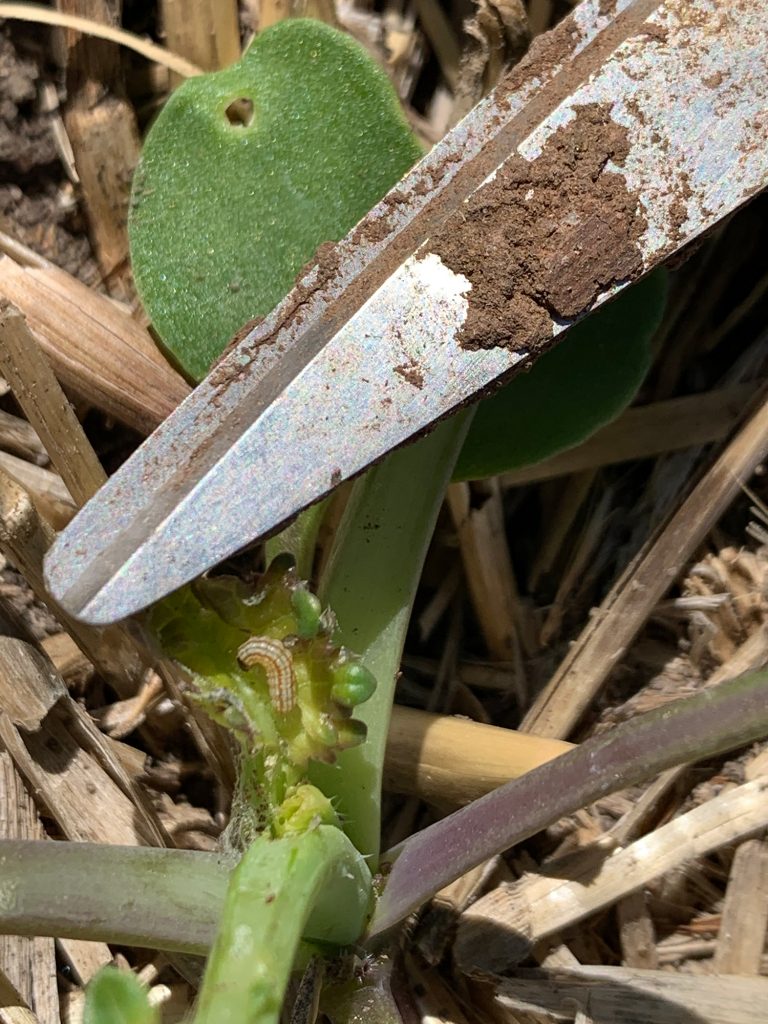Late infestations of cabbage centre grubs in forage brassica crops and early-sown canola are now abating with the onset of cool weather.
Where have they been reported?
Cabbage centre grubs (Hellula hydralis) have been causing widespread damage in late sown forage canola between Cullinga and Muttama in the NSW Riverina, and in forage brassicas and volunteer canola near Werneth and Tatyoon in Victoria’s South West District. In most cases, the damage has been extensive.
Heavy grazing is assisting with control, but is limited in impact because the grubs are often close to the plant crown.
These larval sightings are unusually late this autumn; cabbage centre grubs are more commonly found in the warm conditions of late spring and summer.
SARDI research entomologist, Dr Michael Nash, has reported that crops badly affected in the Feb – April period are recovering as the infestations have waned.
About cabbage centre grub
Cabbage centre grubs feed exclusively within the brassica family.
Larvae are cream or creamish-green in colour with dark heads, and distinctively longitudinal reddish-brown stripes. When fully grown they are approximately 12 mm long.
Adult moths are approximately 12 mm long with light and dark brown mottled markings; wings are held horizontally when at rest.
Cabbage centre grubs have several generations per year and, according to Michael, at temperatures above 30°C can complete a lifecycle in three weeks.
Adults lay their eggs on the host plant and the newly emerged caterpillars feed in a tunnel-like manner on the leaves before boring into the growing point of the plant. Larvae then pupate on the host.
Young larvae protect themselves within leaves by binding them together using silken webbing, while older larvae generally feed within the protected growing points or crown of the plant.

Our advice
In most years, damage is inconsequential, but this year pest pressures have resulted in reduced plant viability and in some case loss of grazing potential over extensive areas of crop.
A common way to reduce pest pressure is through heavy grazing, although the effectiveness is somewhat dependent on stocking rates.
Although synthetic pyrethroids are reportedly quite effective against cabbage centre grubs, the warm-season preferences of this pest imply that damage in brassicas will now decline rapidly.
The issues experienced in late summer-early autumn do not necessarily mean the same pest pressures will eventuate this spring.
Acknowledgements
Sources of field reports of cabbage centre grubs
Sandy Biddulph – Consultant, Biddulph Rural Consulting, Cootamundra (NSW South West Slopes & Plains)
Phil Bowden – Agronomist, Pulse Australia, Cootamundra (NSW South West Slopes & Plains)
Dr Michael Nash – Researcher, SARDI (Adelaide)
Tim Pilkington – Agronomist, Elders, Ararat (Victorian South West)
Cover image: Photo by Andrew Weeks, Cesar Australia





